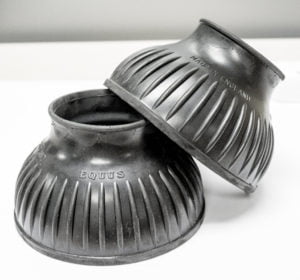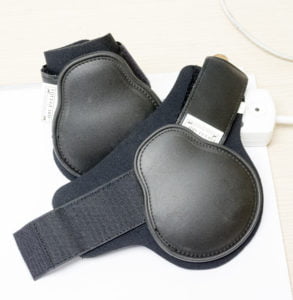[dropcap]W[/dropcap]e are spoilt for choice when it comes to boots, and these days boots are even more innovative and technologically advanced than ever before. Boots come in a variety of materials and are secured with Velcro, buckles or clips.
With so many options available, it can be tricky to pick out the best boots for your horse. We’ve put together a guide for choosing the best boot to suit your horse’s needs.
Overreach boots
Overreach boots, also known as bell boots, are worn over the pastern and the hoof, and help to protect the horse’s front heels when struck by the hind legs. Overreach boots also help to prevent a horse from taking off his front shoes with his hind legs. These are usually made from synthetic material or rubber, and are fastened either with a Velcro strap or with a buckle. The most traditional form of overreach boots is simply stretched over the horse’s hoof and usually left on until the boots need to be replaced. These days you also get no-turn overreach boots, which force the boots to stay in place and not rotate around the foot.
Overreach boots should only be worn when needed, such as in the paddock or during work. If your horse wears overreach boots that can’t be removed daily (those without straps), then make sure that they are turned up at night and during grooming, so that the foot and pastern can breathe. Make sure you clean the area under the boot every day and that the leg is not wet or injured underneath.

Brushing boots
Brushing boots secure around the horse’s cannon bone, and usually have a protective padded layer on the inside. The reason for this is to protect the inside of the leg when struck, or brushed into, by the opposite leg.
Brushing boots are a great option for everyday flatwork or hacking, as they provide good all-round protection for the lower leg. You can pick up a decent pair for as little as R300, and they come in a variety of colours and sizes.

Back brushing boots
Similarly to brushing boots, back brushing boots are worn on the back legs and also protect the back legs when striking into each other. They are usually half the size of front brushing boots, and they fit snugly around the bottom of the cannon bone. These are usually worn with brushing boots or tendon boots.

The full article appears in the April issue of HQ (121) > Shop now
